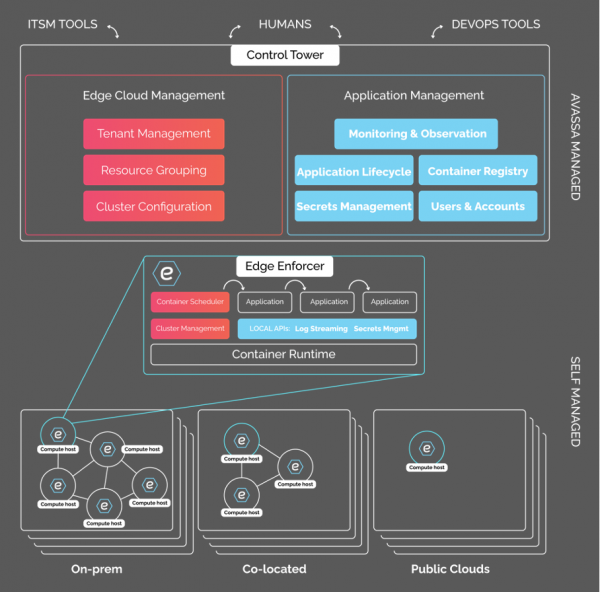Founded in Stockholm, Sweden, Avassa is a startup that aims at solving the challenges of the distributed edge cloud.
Edge computing is not new; it consists of computers distributed across multiple locations, with a broad variety of use cases. These could be point-of-sales systems at brick-and-mortar shops or hardened computers embedded in all sorts of public locations, such as on telecom towers or others, on which applications are running and processing data.
The commonalities we can find in edge computing are:
- Few computers at each location, but distributed across many locations
- Applications and data distributed across locations
- Broad geographical distribution with potential country-specific requirements
- “Best effort” connectivity with no SLAs or high availability; intermittent networking, often consumer-grade
Today, most applications are built using cloud-native principles and distributed as containers. While cloud-native applications work perfectly well in public clouds, running them at the edge comes with several setbacks: a container environment must be set up and managed at each edge location to provide workload execution capabilities, and application distribution (installation, updates, removal) is a vastly manual endeavor. Taking into consideration the nature of the distributed edge, doing this at scale involves a massive, costly overhead.
Avassa considers that to achieve a distributed edge cloud experience, automation is key. Each edge location should be fully managed in a zero-touch fashion, security should be baked into every aspect, and application management should be done centrally and seamlessly. Avassa CTO Carl Moberg stated that application teams and developers are spoiled by the public cloud’s capabilities and ease of use. The distributed edge cloud needs to live up to these expectations by offering a similar experience, by offering built-in security, efficient resource utilization, multi-tenancy, and massive scalability.
Solution Overview
From an architectural perspective, Avassa consists of two components: the Control Tower and the Edge Enforcer.
The Avassa Control Tower is installed on the core network (for on-prem distributions) or can be consumed as a service. Its role is to manage distributed applications as well as sites and distributed edge resources and can be accessed through GUI, CLI, and APIs. Through Control Tower, operators can very easily configure new applications, their attributes, and requirements. They can also use it to plan deployments and define conditions to be fulfilled, such as locations or sites matching with specific customizable tags. Hosts and sites can be grouped as needed to provide flexible deployment options. Another key capability of the Control Tower is the ability to monitor the environment’s health as well as observe resource consumption.

Its counterpart, the Avassa Edge Enforcer, is a Docker-based software agent installed locally on the hosts. It communicates with the Control Tower via a secure call-home mechanism and is in charge of handling application placement as well as scheduling. It also embeds a lightweight cluster management controller and is built around a zero-touch / zero-trust concept to simplify configuration and eliminate manual steps, providing a self-contained environment where apps execute securely. The Edge Enforcer also provides a local container registry server, as well as local APIs for secrets management, and event streaming capabilities for applications that may require them.
The solution is multi-tenant and allows organizations to segment access and resource usage between internal teams, or with external stakeholders if necessary.
Conclusion
The network edge is yet another proof of the pervasiveness of cloud-native workloads. These provide unmatched flexibility not only because of much faster development cycles, but also because of improving portability and reduced footprint. The counterpart to this is the need to set up and manage container infrastructures to execute such workloads, a task that cannot be performed efficiently at scale, particularly in the case of massively distributed edge locations, sometimes in remote areas.
Avassa was built with these challenges in mind, it allows organizations to manage thousands of applications at the network edge in a secure and fully automated fashion (including deployment, updates, and removal) by using infrastructure-as-code principles. By providing core services such as local registries and lightweight cluster management, it enables a zero-touch experience that considerably simplifies the edge application management lifecycle.
Dive deeper into Avassa’s products by watching their sponsored Gestalt IT Showcase here.




